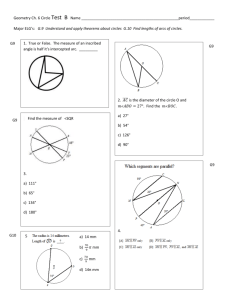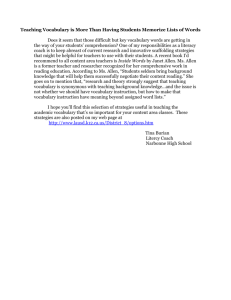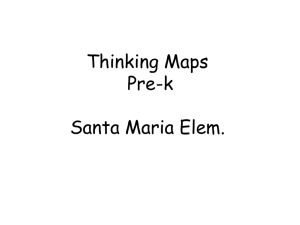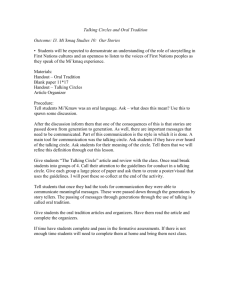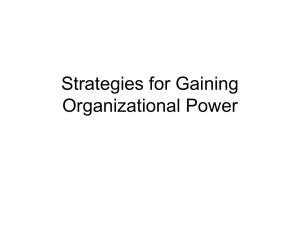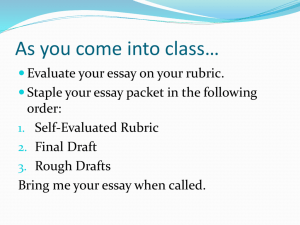Intentionally Developing Leaders of Color
advertisement
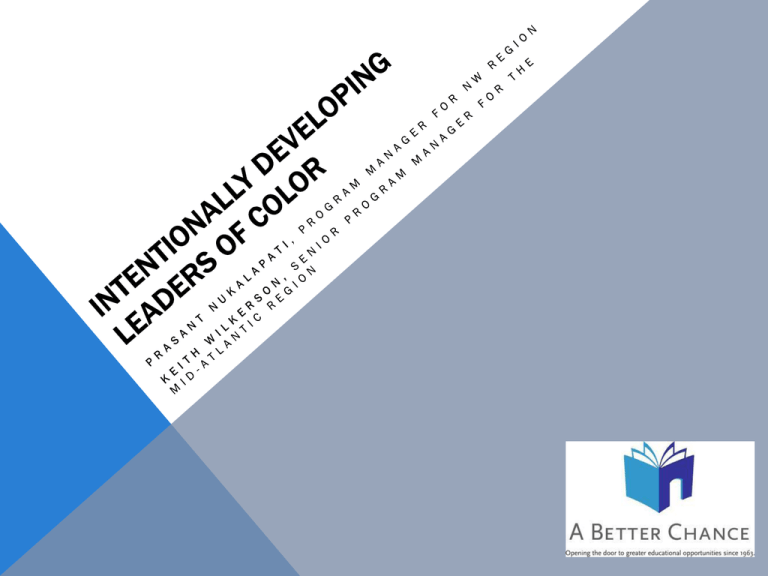
PERSPECTIVE/CONTEXT: • • What do we hope will happen for students of color at high powered institutions ? What is the reality of what happens? Why doesn’t access translate to tangible success for many of our students? WHY A LEADERSHIP CURRICULUM: • To help students of color understand what it means to be a high impact individual • To develop high impact young leaders of color, with skills capable of taking on leadership positions in society • To develop students who are already “natural born” leaders into leaders with transferable skills who create change; and to develop students who aren’t “natural born” leaders but who have a desire to be leaders • To expand the networks of young people of color to be in alignment with their White peers LEADERSHIP THOUGHT EXERCISE LEADERSHIP THOUGHT EXERCISE (CONT.) WHAT DOES THIS CURRICULUM LOOK LIKE? • A grounding in historical trends to increase awareness and sense of self empowerment • Skills based • Goal Oriented • Sustaining EXPANDING CIRCLES EXERCISE: Most change requires moving a group of people (whether it is your class, your team, your school community, your neighborhood etc.) in one direction towards a goal. Consider the people in your life that you must motivate to create the change you seek. Each group represents a concentric circle that expands out from you. On the large sheet of paper you are given, start by creating a circle with you in it and then add the below groups. Once you write down the “headings”, include two-three specific people that come to mind in each of the expanding circles Who are the people in “the choir?” Who are the people who don’t really care if this change happens are not? Who are people that have influence to help you make this change? Who are the people who have the resources to help you make this change? CO-CENTRIC CIRCLE EXERCISE People Who Have Influence/ Resources The People Who Are Indifferent The Choir The Thing You Want to Change 10 MONTH CURRICULUM: Month 1 Overview/ historical perspective Month 2 Building and Writing a Resume Month 3 Being a Global (and Local Citizen) Month 4 Expanding Networks Month 5 Influencing Others Month 6 Public Speaking (Part 1) Month 7 Public Speaking (Part 2) Month 8 Writing for Multiple Outcomes Month 9 Leveraging Technology Month 10 Raising and Managing Money THE DIFFERENCE BETWEEN SUCCESS AND FAILURE 1. A steady commitment required with fixed meeting dates; a contract/agreement 2. Acknowledgement of consistent participation; Consequences for inconsistent participation 3. A curriculum in place 4. A student chair that you can ideally meet with in advance of the meetings CURRICULUM AND MATERIAL TO DRAW FROM: • • • • • Student leadership Challenge Curriculum Harvard Business Review, HBR Ten Must Reads: On Leadership Center for Creative Leadership, Feedback That Works for Non Profit Organizations, Shera Clark 10 Things Employers Want You To Learn in College, Bill Copin The Tipping Point, Malcolm Gladwell CONTACT INFO: Prasant Nukalapati A Better Chance Program Manager, NW Region pnukalapati@abetterchance.org Keith Wilkerson A Better Chance Senior Program Manager, MidAtlantic Region kwilkerson@abetterchance.org


